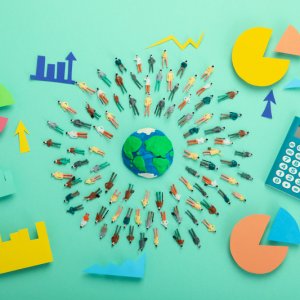
Mexico’s Economic Recovery Slows Down
 By Sofía Hanna | Journalist and Industry Analyst -
Wed, 02/10/2021 - 10:31
By Sofía Hanna | Journalist and Industry Analyst -
Wed, 02/10/2021 - 10:31
While some studies show a better economic scenario for Mexico in 2021, others say otherwise. Halfway through 1Q21, data shows that the balance is going to the least favorable side.
An MBN article released in December using the data from Barclays mentioned that after the vaccination plan against COVID-19 was released, expectations showed 3-4.5 percent growth in the Mexican economy, as stated by Marco Oviedo, Chief Economic Investigator for Latin America at Barclays, during a videoconference for Economic Perspectives in 2021. On Dic. 23rd, the first batch of vaccines arrived in Mexico, according to Expansión, which meant there was enough time to see the results of releasing the vaccine plan and starting their distribution. However, HR Ratings recently released information showing that the economic recovery will begin to slow down in 1Q21, as reported by Forbes.
Felix Boni, Director of Analysis at HR Ratings, explained that given the state of the pandemic and the lingering lockdowns, the economy could be facing a 10 percent fall. “Manufacturing has recovered but a slowdown is expected that could be more negative. It is a statistical effect that is practically inevitable … It is natural to have problems (in the application of vaccines). It is a macroeconomic factor that can cause problems in the first quarter and it is a problem that other countries have also faced,” Boni mentioned in a Forbes article.
While 1Q21 may show wanting numbers, HR Ratings foresees 4.26 percent growth at the end of 2021, which would be more aligned to the previous information released by Barclays. Some factors could foster a faster recovery, one of them being an increase in the country’s debt and encouraging expenditure on profitable projects. The second one would be to give more resources and support to the agricultural sector and the primary activities sector in general, as mentioned in an MBN article and in Forbes.
Incurring in more debt may sound like the opposite a country would want. However, according to an MBN article, “a balance is necessary between financial stability and support for homes and business that were the most affected,” said Alejandro Saldaña, Chief Economist of the financing group BX+. By injecting money into projects that could bring a future benefit, the economy would better prepare for recovery.
According to the most recent announcement made by the Minister of Agriculture, Víctor Villalobos, agricultural production increased by 0.8 percent, the livestock sector grew by 2.6 percent and the fishing sector by 16 percent. These figures translated to a “historic” surplus in trade balance in primary activities of US$11.43 million, according to Forbes. For this amount to be reached, there had to be an expense of US$1.02 million that was given to micro and small producers, which shows the benefits of support for producing sectors.
















